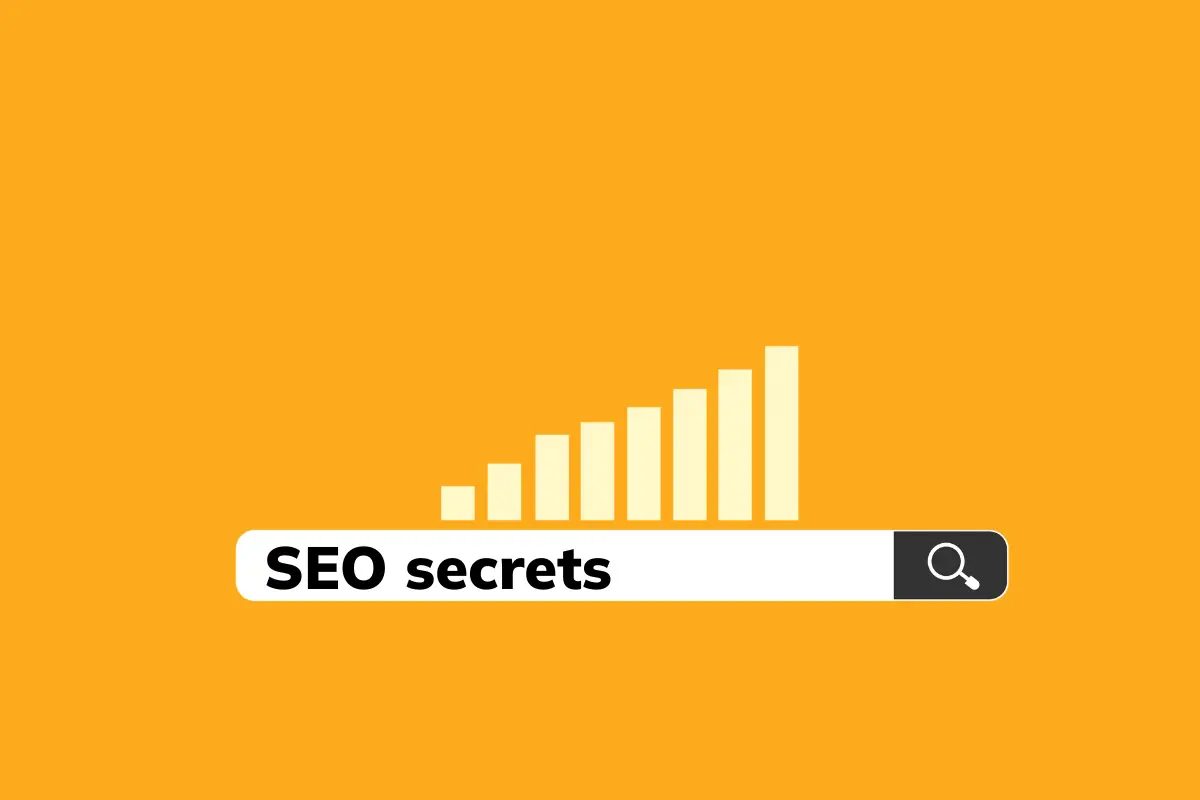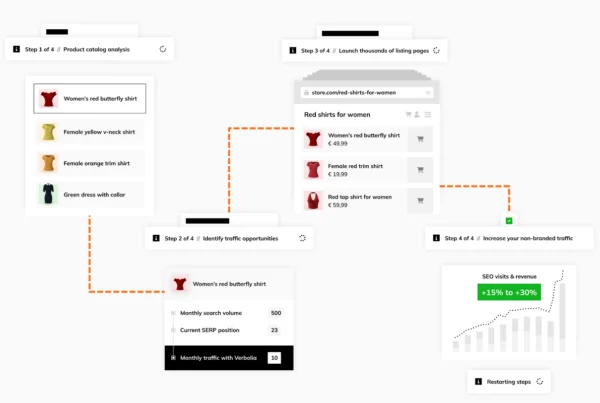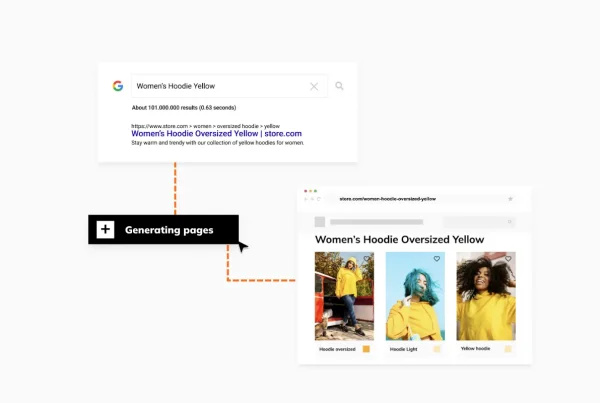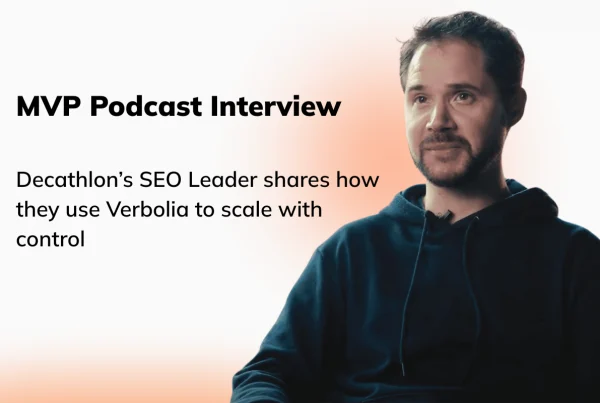Top 3 SEO secrets for large e-commerce
Estimated reading time: 7 minutes

Ever feel like your e-commerce site is getting lost in the vast sea of the internet? You’re not alone. In the competitive world of online retail, getting your products seen by the right customers can be a real challenge.
This is especially crucial for large e-commerce sites with extensive catalogs, where organic traffic can significantly impact revenue. Search engines are the gatekeepers to organic traffic, and understanding the top ranking factors for e-commerce SEO can help you increase your organic traffic and therefore increase organic sales.
Our CEO and co-founder, Pierre-Olivier Danhaive, aka, Pod, recently revealed his top 3 SEO success factors for large e-commerce sites according to common practices of industry leaders like Decathlon, Revolve, Walmart, Boohoo, …
So, let’s dive into Pod’s insights and discover how you can boost your e-commerce SEO!
Think of your website as a treasure map. Your website visitors are the explorers, and your products are the buried treasure. Your job? Make that map as easy to follow as possible!
E-commerce SEO success depends on relevant content because search engines like Google want to provide the best answers to their users’ queries. In the industry of e-commerce sites, that often means showing them the most relevant product listing pages (PLPs).
Why focus on PLPs?
PLPs are the heart of your e-commerce site, driving up to 70% of your SEO traffic. They’re often the first impression a customer has of your brand, so make it count!
Pro tip: Keep your PLPs fresh and up-to-date! Make sure your products are in stock and reflect the latest trends.
Ebook – How to optimize your organic traffic with product listing pages?
Discover actionable strategies to optimize your Product Listing Pages and boost your SEO traffic in our ebook.
What makes content relevant?
To rank well, your pages must align closely with the intent of your visitors. When a user searches for a specific product or category, here is what you should pay attention on your PLPs:
- Display products that match their search query. Your PLPs should perfectly match what your customer is searching for.
- Provide all the juicy details: think captivating product descriptions, helpful reviews, and high-quality images.
- Use keywords naturally throughout your page.
2. Engagement
Once a customer lands on your site, you want to keep them engaged. Think of it like throwing a party – you want your guests to stay and have fun!
Google uses engagement metrics (like time spent on page and bounce rate) to see how much people are enjoying your site.
How to boost engagement?
- Speed things up! A slow website frustrates visitors and signals to Google that your site may not provide a positive user experience and therefore, no relevant answers.
- Make it easy to navigate. Clear menus and a search bar are your best friends.
- Use visuals wisely. High-quality images, videos, and interactive elements like 360-degree product views can captivate visitors.
The engagement-conversion connection
Engagement isn’t just an SEO metric—it directly impacts conversions. The longer a visitor spends exploring your site, the more likely they are to make a purchase. By creating an engaging user experience, you’re not only improving your search rankings but also consequently boosting your bottom line.
3. Internal linking
It might not grab headlines, but internal linking a powerful strategy for SEO. For large e-commerce websites, ensuring that all pages are easily discoverable by search engines is essential.
Why internal linking matters?
- Improves crawlability: Internal links help search engine bots find and index your pages more effectively.
- Boosts page authority: Linking to key pages distributes link equity across your site, signaling their importance to search engines.
- Enhances user navigation: Thoughtful internal linking guides visitors to related products or categories, improving their experience and increasing the likelihood of a purchase.
Best practices for internal linking
- Use clear and descriptive anchor text that clearly indicates the linked page’s content.
- Broken links: Regularly audit your site to identify and fix broken links.
- Link to both high-priority and newly added pages to maintain a balanced structure.
Pro tip: Avoid “orphan pages” – pages that aren’t linked to from anywhere else on your site. These pages can harm your SEO performance by becoming invisible to search engines.
Putting it all together
To succeed in e-commerce SEO, it’s crucial to focus on the factors that matter most: relevance, engagement, and internal linking. By optimizing your PLPs, creating an engaging user experience, and ensuring your pages are well-connected, you can:
- Drive more organic traffic to your site.
- Improve your search engine rankings.
- Increase conversions and revenue.
SEO is a journey, not a destination. By regularly analyzing your site’s performance and adapting to search engine algorithm updates, you can maintain your competitive advantage.
Start implementing these strategies today and watch your site’s performance soar!
About The Author
How can Verbolia help your e-commerce platform.


